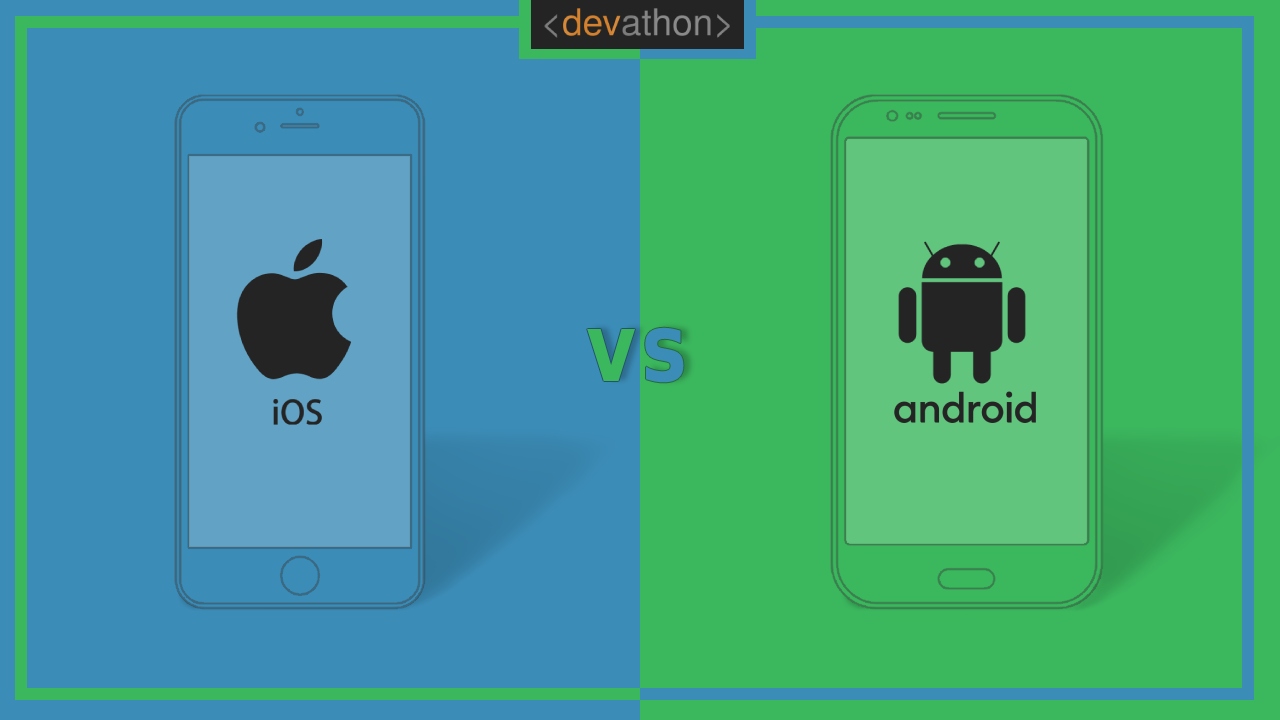
iOS vs Android: Which Should You Build Your Mobile App on First
If you’ve determined that building a mobile app is the right solution for your brand or business, you’re not alone. Mobile apps have become an important business channel for all types of businesses looking to engage their customers and expand their market share. While companies now have the option of developing for iOS, Android, Universal Windows Platform (UWP) or making a platform-agnostic progressive web app (PWA), iOS vs Android app development is by far the most common consideration. So, how do you choose which platform to build your mobile app on first?
Mobile apps vs websites
Over the past ten years, mobile apps have become ubiquitous, making iOS and Android development incredibly important. According to the latest research from the Pew Research Center, 70 percent of Americans own a smartphone and over half own a tablet. In fact, over 70 percent of all U.S. digital traffic comes from a mobile device. As the following infographic shows, other countries aren’t far behind. Mobile devices for 67 percent of Spain’s traffic, 71 percent of China’s traffic and 75 percent of Mexico’s digital traffic.
The latest research shows that mobile users spend over 90 percent of their time browsing or using apps and just 10 percent browsing the rest of the net. They also spend over 200 minutes per month shopping, compared with under 11 minutes/month for website users. This indicates that iOS and Android app development is crucial for companies looking to engage consumers with their products and services.
iOS vs Android
Compared with the past when there were several options, iOS and Android are pretty much the only platforms worth considering right now. In fact, when you combine them, they account for almost 100 percent of the mobile market. The latest figures suggest that Android and iOS account for almost 97 percent of the global market. Therefore, you should build and launch your app for both platforms simultaneously, as there is no third platform worth considering.
Unfortunately, constraints on time, resources and budget can make this plan a non-starter. That’s why many entrepreneurs and companies have to weigh the pros and cons of Android apps vs iOS apps and launch on one platform first before launching on the other at a later date. There are certainly stark differences between the two platforms. Some estimates puts the cost of Android development 30 percent higher than iOS development due to the challenges of writing code that works on a wide range of handsets and screen sizes. One study found that over half of all Android users are using a device that is more than two years old.
What are the challenges of building for both platforms at the same time?
The costs and complexities of building for both platforms at the same time are significant. For starters, instead of hiring one development team, you may need to hire two teams and therefore double your costs. If you look at the costs for each stage of the app development process, some stages will have roughly similar costs whether you are developing on iOS or Android.
Cost of app development by stage
Stage 1. Research and planning – up to $10k.
Stage 2. App design – up to $20k.
Stage 3. App coding and features development – up to $30k.
Stage 4. Testing – up to $10k.
According to data from Velvetech, the total cost of developing an app primarily depends on whether you use a U.S.-based team or an offshore team. The next most important factor is the features and functionality you want to build into it than whether it is on iOS or Android app.
The cost of building an offline standalone app costs ~$50,000 is you use a U.S. based agency, and between $12,000 to $25,000 if you use U.S.-based management with a distributed team. The most economical price is ~$5,000 if you use an offshore team, according to Velvetech.
After team location, the next biggest impact on the overall price is whether you want a native iOS or Android app or whether you want a hybrid cross-platform app. According to data from SAGipl, developing a native apps costs between $10k – $20k while developing a hybrid app costs between $10k and $15k, when using an offshore team.
App development costs have decreased markedly over the past five years. In 2015, Facebook released React Native, a mobile development framework that let people make 100-percent native apps for both iOS and Android. React Native apps are fast and reliable and are much cheaper and faster to develop.
The main drawback of React Native apps is that the framework is still (even in 2019) in beta testing, despite being used by the likes of Skype, Bloomberg, and Facebook. In some cases, inexperienced developers struggle to get React Native apps to offer smooth navigation and often run into hot reloading failures, or other issues with debugging tools. React Native still lacks some components such as custom modules and implementing advanced features still requires dedicated Android or iOS developers. So, if your app requires some advanced features, you still may be faced with a choice between Android apps vs iPhone apps.
Why building for one platform first makes sense
The obvious advantage of building for one platform first is that you only need one development team. Let’s say you take the above statistic that Android development is roughly 30 percent more expensive than iOS development, and you choose to build on iOS. The advantage of this approach is that you only need to hire one development team who knows exactly how to build a native iOS app. But what other differences would there be?
Research shows that iOS development requires at least 40 percent less code than Android development. This means that there is less code to be read, debugged and maintained. As you develop your app, this will affect everything from testing times and costs, to updating costs and maintenance.
Building for just one platform first lets you test your idea with a subset of your audience. If the app works as planned, you can then invest in developing an app for the second platform. If not, you will have limited your expenditure significantly when compared with developing an app for both platforms at the same time.
As most apps will be launched with zero users, building for one app means that you only have to spend your marketing budget for one subset of users. For example, if digital ads are your primary acquisition channel, launching an app on iOS means that you only have to spend on ads for iOS users. This helps you control your costs and keep your marketing budget in the black.
Another good reason for developing on one platform first is that it gives you time to develop the app’s functionality. You can test, add, or drop features until you reach a stable state. It is much cheaper to do this for just one platform compared with two simultaneously.
Lastly, you may find that your target audience is overwhelmingly in favor of one platform. For example, Dote Shopping’s market research found that its target audience were far more likely to own an Apple device, so launching an app for iOS made sense. Over the past five years, Dote Shopping have raised over $15 million dollars and still haven’t felt the need to develop an Android version yet.
Set your product goals before choosing a platform
To help you decide which OS (iOS or Android) to develop for first, you need to do enough research to set your product goals. This helps ensure that you have a user-focused vision for your app and are working towards meeting the needs of your target customers.
Factors that influence your decision of which platform to develop for first
When looking at Android vs iPhone app development, there are XXX main factors that will influence your decision of which platform to build on first.
These are:
- Target audience
- Talent availability and cost
- Cost and review process
- Monetization

Target audience
When considering Android app vs iOS app development, you first need to look at smartphone ownership percentages with your target audience. Form a clear picture of who your target audience is and study the demographic data to show the geography, age bracket, income bracket and gender.
You may find that your target audience is overwhelmingly in favor of one platform – such as iOS – giving you a clear reason to choose that platform over the other. The more you know about smartphone ownership rates and and platform preferences within your target audience, the better placed you’ll be to choose which platform to build your mobile app on first.
Talent availability and cost
Overall, there’s not much difference in cost between iOS and Android app development. iOS apps are usually written in either Objective-C or Swift, whereas Android apps are written on Java. Although Objective-C developers can be up to 15 percent more expensive to hire, they only have to write for one system (iOS) and can generally complete development 30-40 percent faster than Android developers, so the costs balance out. This is because Android developers have to create apps that work across a wide range of devices, whereas iOS developers are working exclusively for Apple products. In terms of your budget and timeline, it’s helpful to know that Android development can take longer.
Cost and review process
It can be helpful to know that it can take longer to get an iOS app approved for the App store as Apple’s review process is more stringent. Whereas Android apps are usually approved within a day or so, iOS apps have to adhere to a strict set of guidelines. These include:
- Being reviewed against a specific set of technical, content, and design criteria
- Updated to work with the latest operating system
- Built using Xcode 10.2.
- Thoroughly tested and updated for the latest devices.
While some developers can get their apps submissions approved within a few hours, there are plenty of review horror stories of app submissions being stuck for weeks or even longer.
It’s important to note that no matter how challenging App store submissions may be, if your market research indicates that your target market has a strong preference for iOS devices, then this is the platform you should develop for first.
Monetization
The last factor to consider is your monetization strategy, ie. how will you make money from the app? Despite accounting for over 75 percent of all global app downloads, the Google Play Store generated about 88 percent less revenue that Apple’s app store last year (2018). This suggests that monetizing an app through a subscription model or in-app purchases is more lucrative if you develop for iOS.
On the other hand, ad-based monetization strategies tend to do better on Android apps. Figures also show that Android developers are getting better at encouraging consumer spending. In 2018, the Google Play Store saw a 27.3 percent increase in spending year-on-year.
Examples of successful apps that launched for one platform first and then the other
Almost every successful app today started life as an iOS app. That’s where the majority of money can be made so most companies release for iOS first, wait to see if it catches on and then develop an Android app later. Here are three examples of the best apps that launched for one platform first and then the other.
#1. Uber
Uber is one of the most successful apps that started out as an iOS app.
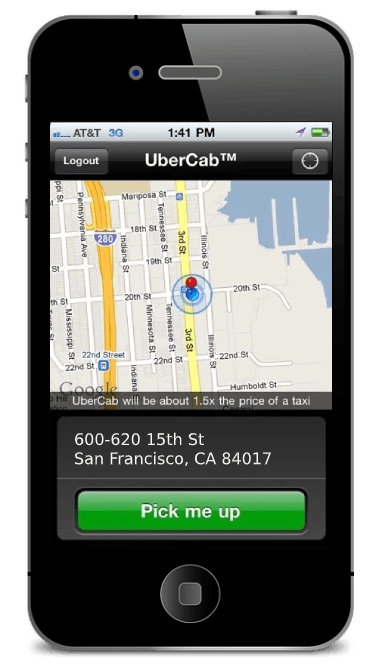 Which platform did Uber launch on first?
Which platform did Uber launch on first?
Uber launched on iOS first in 2009.
How long did they take before they launched on Android?
Uber launched their Android app in 2010.
What was the main reason behind the strategy?
Ubers’ decision to launch their inaugural app on iOS first was a no-brainer: over half of all smartphones in the U.S. are iPhones. Uber needed a native mobile app to handle the complexities of push notifications and locations, so they developed for iOS before working on an Android version.
How did this strategy help them?
Launching on iOS first helped Uber meet the needs of their target audience (ie. people living in San Francisco). An iOS app made sense as most of their customers used iPhones.
Uber’s approach is smart if you’re working on an app with a complex server-side component. You can solve issues with the architecture and server-side APIs on one platform first and then have the other trail behind.
#2. Life is Strange
The mind-bending hit game Life Is Strange started out as an iOS-only app last year. For a while, only iOS users got the fun of helping Max Caulfield alter time to save her best friend Chloe Price.
 Which platform did Life is Strange launch on first?
Which platform did Life is Strange launch on first?
Life is Strange started out as a PC game in 2015 but was eventually ported to iOS on December 17, 2017.
How long did they take before they launched on Android?
The Android version of the game was released on July 18, 2018.
What was the main reason behind the strategy?
iOS development requires roughly 40 percent less code than Android development. This makes testing, debugging and maintenance simpler and more straightforward. Android apps must work on a wide range of devices from different manufacturers and screen sizes, lengthening the development process.
How did this strategy help them?
This strategy gave the game’s developers time to iron out problems and issues with the Android app before its official release.
The Android version was delayed but is now on the Google Play Store, giving Android users the chance to rewind time and alter the past, present, and future.
#3. IFTTT
IFTTT stands for ‘If This, Then That’ and first hit the iPhone, iPad, and iPod touch back in 2013. It lets you bring your favorite apps together and control everything around you.
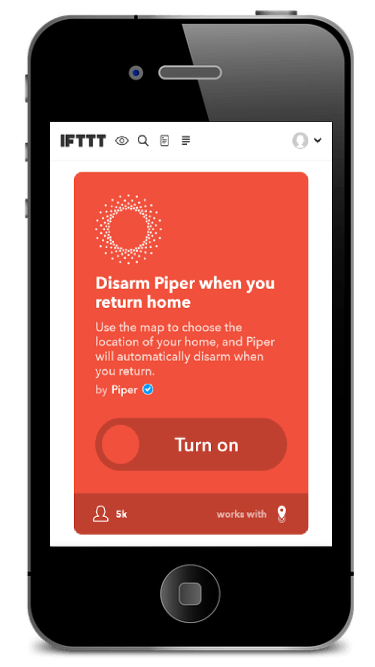 Which platform did IFTTT launch on first?
Which platform did IFTTT launch on first?
IFTTT launched on iOS in 2013.
How long did they take before they launched on Android?
IFTTT launched on Android on April 2014.
What was the main reason behind the strategy?
IFTTT promised Android users that they would develop an Android app soon after they released their iOS app. However, making an Android app wasn’t as simple as just making a port of the iOS app. According to IFTTT’s director of mobile Devin Foley, the Android app required a “lot of new functionality” that took time to build. This included features such as adjusting the volume, sending text messages and setting the wallpaper.
How did this strategy help them?
This strategy helped IFTTT build and test an outstanding app that offered Android users a reliable service with many new features and functions compared with the iOS app.
IFTTT made it onto the Google Play Store and is currently one of the most popular productivity apps. It works with Google Assistant and Amazon Alexa and is compatible with over 600 apps including Twitter, Google Drive, Twitch and Instagram.
Examples of some successful iOS-only apps
Some companies have stuck doggedly with iOS and never even hinted at releasing an Android version. The main reason is that their app uses a feature unique to iPhones but there are plenty of other factors at play. Here are three examples of successful iOS-only apps.
#1. Overcast
Overcast is a popular iOS-only app that helps you find and sort your podcast playlists. It offers recommendations from Twitter and also works with the Apple Watch and CarPlay.
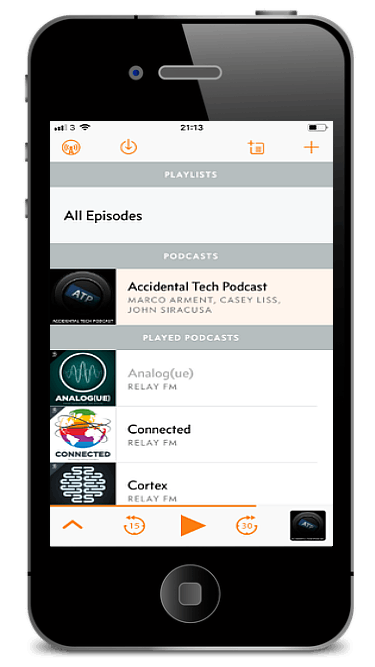 What was the main reason behind the strategy?
What was the main reason behind the strategy?
Developing for one platform has helped Overcast dominate the competition and become the most popular podcast app of all time. Instead of being spread across two platforms, Overcast can focus their efforts on the iOS experience.
How has this strategy helped them?
Overcast has developed many new features and has a number of advantages over the default Apple Podcasts app and many iOS users replace Apple’s offering with Overcast. For example, Overcast’s smart speed setting can cut out silences without creating distortion as some podcast apps can. It’s voice boost makes it easier for users to hear their podcast while listening in a busy environment. There’s also a Twitter powered podcast recommendation service where users can see recommendations for people they follow on Twitter, helping them discover new content.
#2. Tweetbot
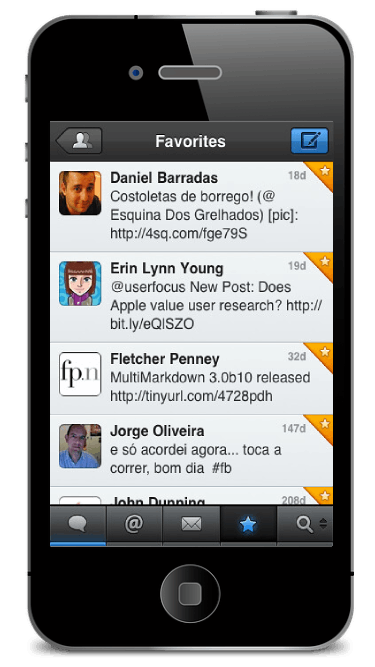 Tweetbot is an iOS-only Twitter client that gives you a huge amount of control over Twitter. It helps you manage tweets, control hashtags and find keywords. It’s great for managing multiple Twitter accounts and gives you useful stats on your own tweets.
Tweetbot is an iOS-only Twitter client that gives you a huge amount of control over Twitter. It helps you manage tweets, control hashtags and find keywords. It’s great for managing multiple Twitter accounts and gives you useful stats on your own tweets.
What was the main reason behind the strategy?
Tweetbot is a paid app that has built a strong and loyal following among iOS users. Their strategy of remaining exclusively on iOS stemmed from a desire to provide the best product to their users.
How has this strategy helped them?
The latest version of Tweetbot (Tweetbot 5) is especially designed for iOS devices and takes advantage of a number of unique iOS features. For example, its new ‘Dark Mode’ is designed to look great on Apple’s OLED displays. The app also suppers the GIF service GIPHY, letting iOS users search for and add their choice of GIF with ease.
#3. Enlight
 This phenomenally successful photo editing app is exclusive to iOS and manages to combine Photoshop-life functionality with a variety of cool effects and filters.
This phenomenally successful photo editing app is exclusive to iOS and manages to combine Photoshop-life functionality with a variety of cool effects and filters.
What was the main reason behind the strategy?
Enlight has positioned itself as the premier photo editing app on the iOS. By staying exclusively on this platform, it has addressed and countered the challenges posed by its competitors apps and maintained its position as the top app in the App Store.
If you’ve ever wished for a single app that lets you edit any photo in any way, this is the app for you.
Hybrid apps: When are they appropriate and when aren’t they an option?
As we discussed earlier, the idea of having a ‘hybrid’ app that works on iOS and Android is a little outdated. The most straightforward solution for someone looking to develop for both platforms simultaneously is to use React Native. React Native apps aren’t hybrid apps – they work 100 percent natively on both platforms (iOS and Android) as well as Universal Windows Platform (UWP). This type of app works great for simple, less complex apps, and can help speed up development times and reduce costs.
However, React Native is still in the beta testing phase and has a few drawbacks such as issues with navigation, debugging and lack of custom modules. If you want to include advanced features, they may not be an option.
Still can’t decide whether you should focus on app development for iOS or Android first? Here at Devathon, we specialize in helping entrepreneurs and business find the best approach that suits their mobile strategy. So, whether you’re looking for app development for ios and android, we can help!
Are you looking to get your App built? Contact us at hello@devathon.com or visit our website Devathon to find out how we can breathe life into your vision with beautiful designs, quality development, and continuous testing.


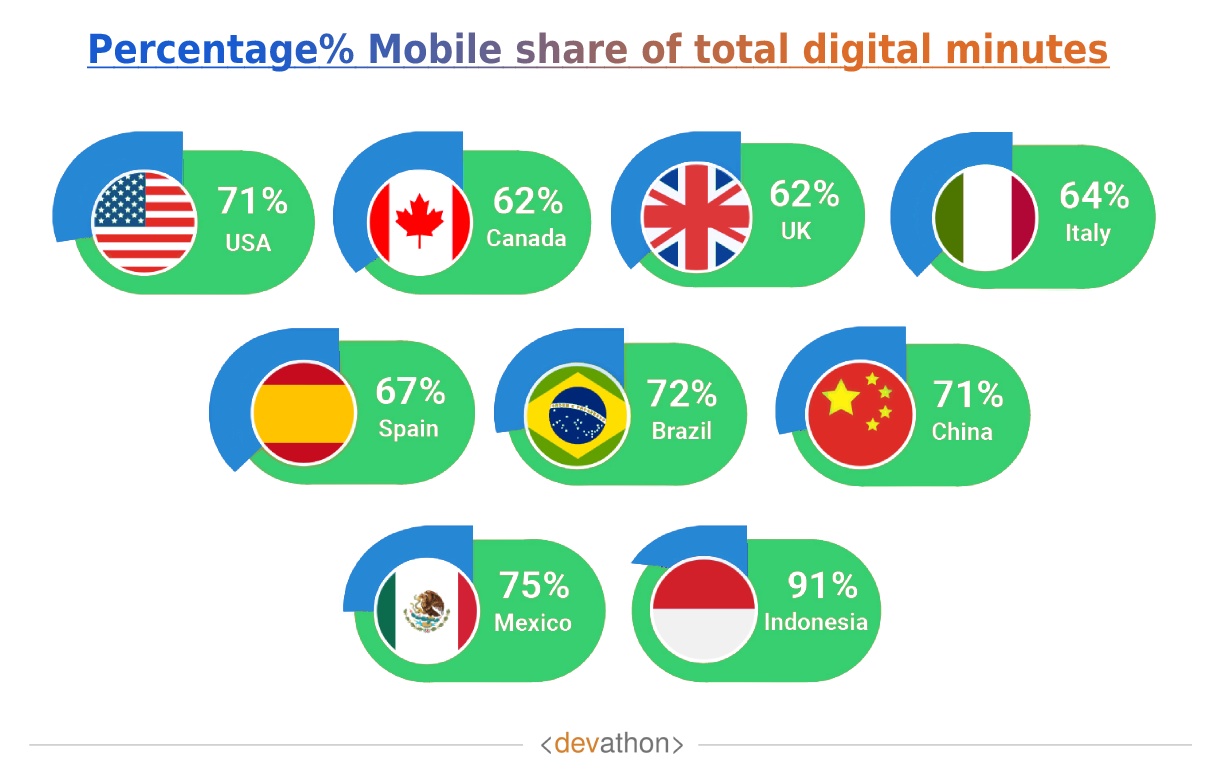
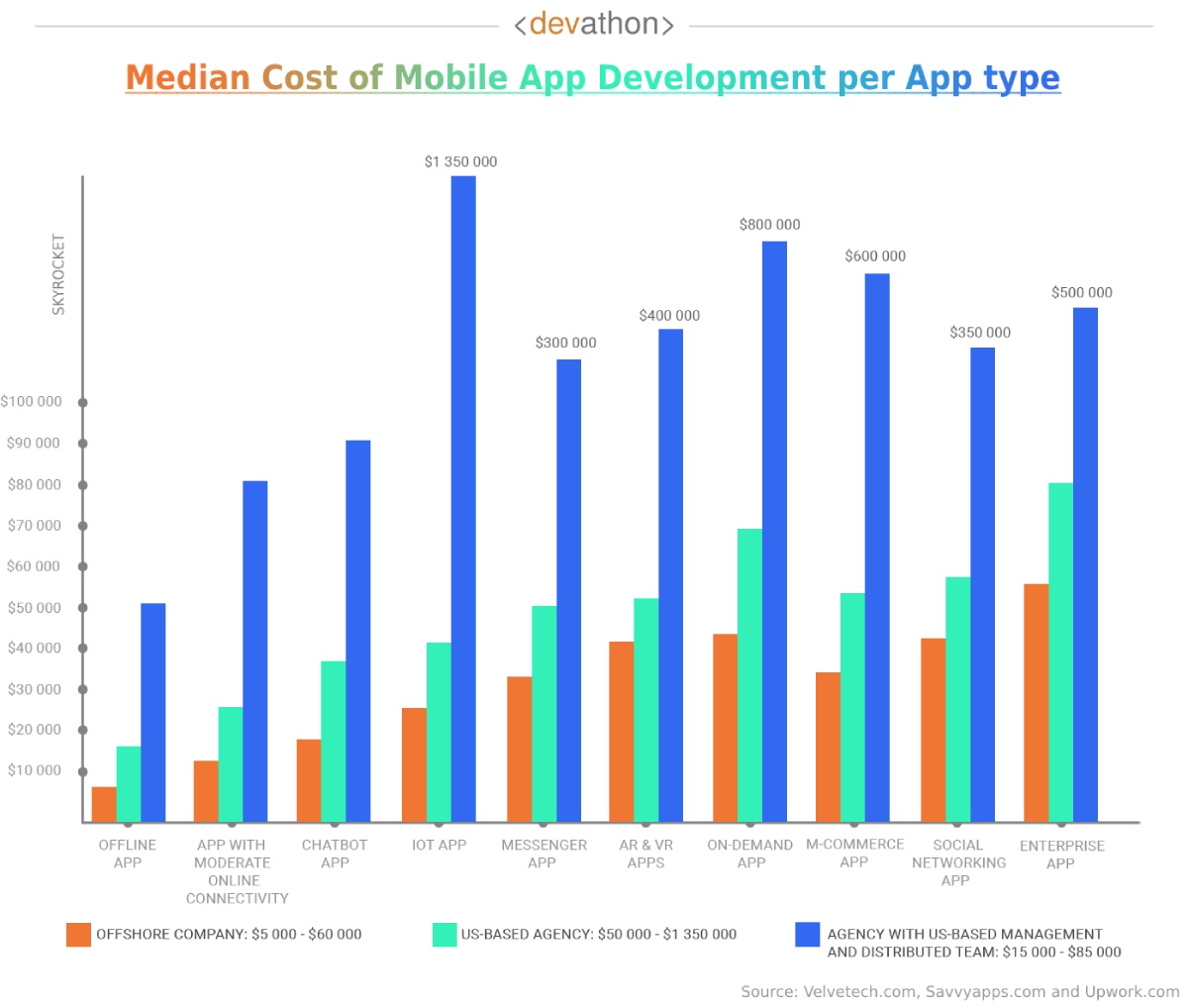

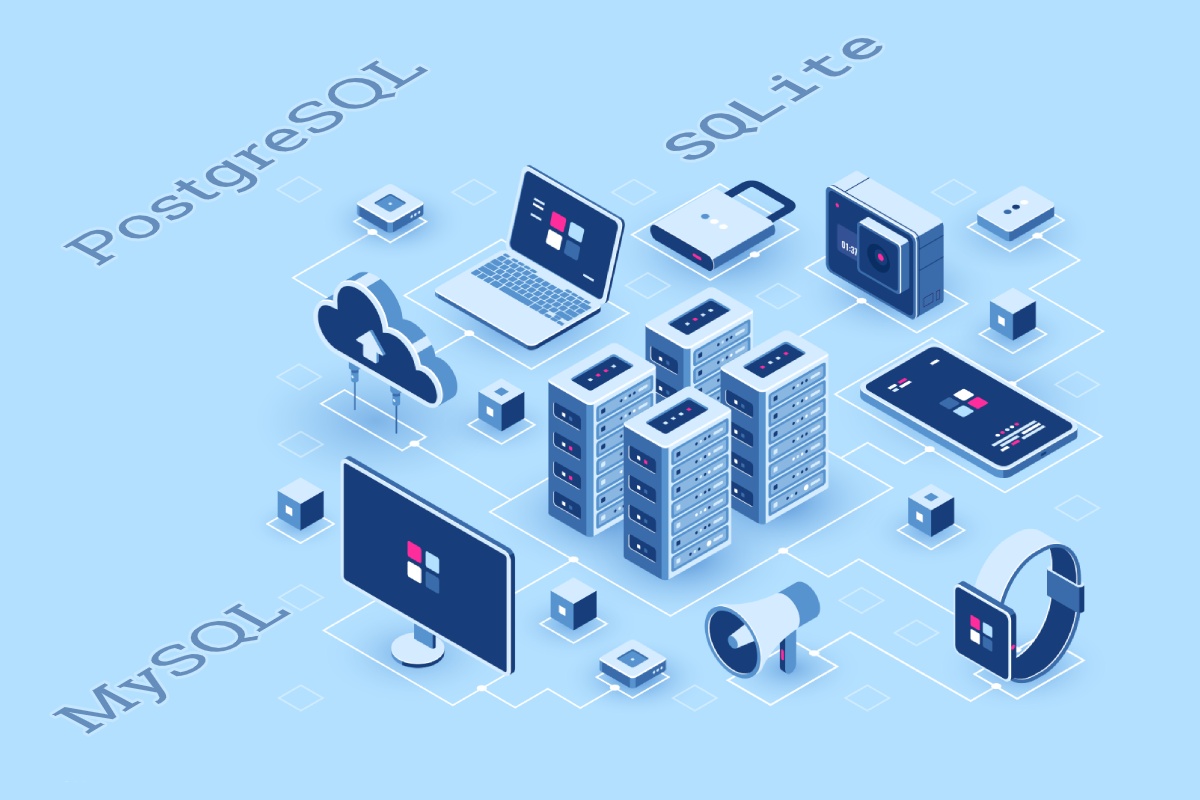


I have a plan to launch an app soon, found this article very helpful. I will surely consider these points, Thanks!